A Side of Gloss
Tedium continues on its long journey to fill its glossary with hundreds of entries, and today’s list takes a long, hard look at all things food-related.
Sponsored By Refind
Get smarter with Refind: Every day we pick 5 articles that make you smarter, tailored to your interests. Refind is loved by 200,000+ curious minds. Subscribe for free
The Glossary of Tedium, vol. 2: Food
If you are a human being, you are strongly encouraged by your own body, particularly your stomach, to eat three square meals per day. Or four, depending on what percentage of your body is made up of Taco Bell.
In an age when seemingly everyone with money is on Ozempic and lying about it, we may soon reach an age when we no longer eat food and just survive on the years of fat we’ve already stored. (Sounds healthy, right?)
Seriously though, we write a lot about food, because honestly, we wouldn’t be able to function about it. This is something that we feel very passionate about, in part because food offers so many opportunities to get weird. We put the strangest junk in our bodies in part because of how well it’s prepared and packaged.
So, like for the prior edition, we’re doing 26 definitions by letter. We may not be able to do this for every topic, but there are just so many good ones that it makes sense. Anyway, let’s get to it:
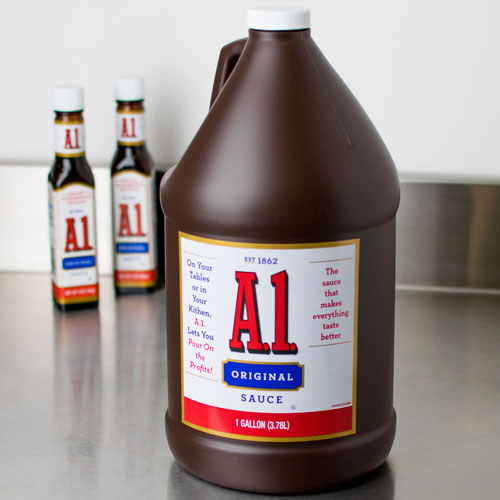
A dangerous amount of A1 Sauce. I wonder if people collect containers like these?
A1 Sauce
An iconic condiment, a type of brown sauce first developed by Henderson William Brand, a chef to King George IV, in an effort to impress the king. Impress him it did, and as a result it ended up being commercialized starting in the 1830s. The sauce, which famously accentuates the flavor of steak, notably uses raisin paste as a primary ingredient.
Battle Creek Food Company
A company, launched by John Harvey Kellogg in the 1910s, that (among other things) was one of the first sellers of vegetarian meat analogues. Protose, a combination of wheat gluten, peanuts, and soy, proved inspirational to many other developers of meat products, particularly Worthington Foods, which developed the more-successful Veja-Links) and helped to foster the Kellogg brand’s long-standing association with analogue meat products, most notably Morningstar Farm veggie meats.
Clover Sprouts
A raw ingredient, a form of sprouts, that the fast-casual sandwich chain Jimmy John’s converted to after facing high-profile food-safety issues with alfalfa sprouts. Despite the restaurant chain’s best efforts, they miscalculated—the problem is not with alfalfa sprouts, specifically, but the idea of sprouts in general, which foster bacteria in their natural habitat.
Dutch Pantry Family Restaurant
A mostly forgotten chain of restaurants, similar in appeal to a modern day Cracker Barrel or Stuckey’s, with still-existing locations mostly located in the mid-Atlantic region. A notable example of a “broken chain”—i.e. a restaurant chain that died off only for a handful of franchisees to survive. (A notable non-restaurant example of a broken chain is Blockbuster.)
El Rancho Vegas
An early Las Vegas casino that helped to popularize the all-you-can-eat buffet format in the 20th century, particularly in Vegas, where it remains incredibly common. While all-you-can-eat approaches existed before El Rancho Vegas, the resort (and its employee Herb McDonald) are notable for making it the centerpiece of a restaurant, something that many other restaurants would do nationally.
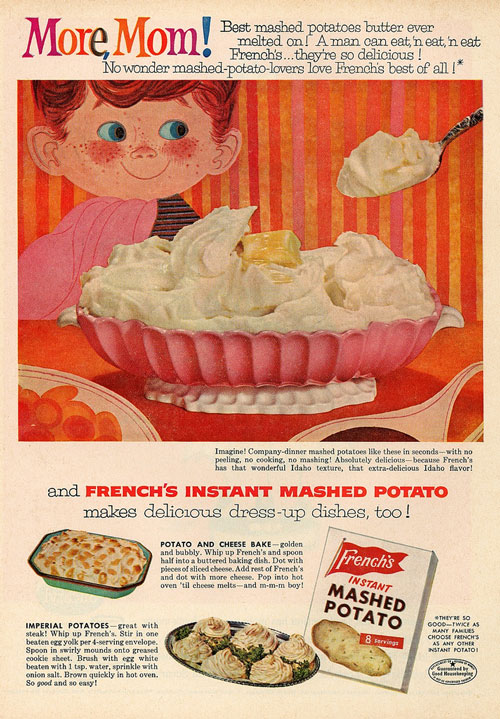
An ad for French’s Instant Mashed Potato, circa 1959. (via Retro Food for Modern Times)
French’s
The food brand, today best known for its namesake mustard, that first introduced instant mashed potatoes to the consumer market. Instant mashed potatoes, developed in the 1940s and first given to soldiers during wartime, have a British pedigree, with inventor Theodore Rendle patenting the foodstuff in 1942 and licensing the product to Americans through French’s parent company, Reckitt and Coleman, in 1946.
Glass Soda Bottle Ban
A 1979 incident in Canada that led to the removal of 1.5-liter returnable glass soda bottles because their design in many cases led to shards of glass flying everywhere—injuring people in sometimes violent ways. The glass bottles eventually gave way to plastic bottles that could better handle being knocked over. At the time of the ban, one in five soda bottles were in the 1.5 liter size, with some cost estimates finding that the ban led to $50 million in lost sales for the soda industry.
Hydrox
The less-respected cookie competitor to Oreo, which nonetheless maintained a market base for more than 80 years, in part because it was kosher. (A recommended addition to the original piece from 2017 is this great video from YouTuber Phil Edwards that analyzed why, exactly, Oreo won.)
Isinglass
A type of collagen, derived from fish bladders, that for many decades was used as a filtering agent for Guinness beer, among others. It was only in 2015 that the makers of Guinness announced that they were transitioning to a less-fishy form of filtering for its beers, which it finally put into place a few years later.
Juice box
A common name for a form of container, made of plastic, paper, and metal, that stores shelf-stable liquids in the United States. Outside the United States, the package is used for other types of products, like milk, and is manufactured as the Tetra-Pak. It took a while for the container type to catch on in the U.S., despite its wide popularity outside of it, because Americans tend to like their milk pre-chilled.
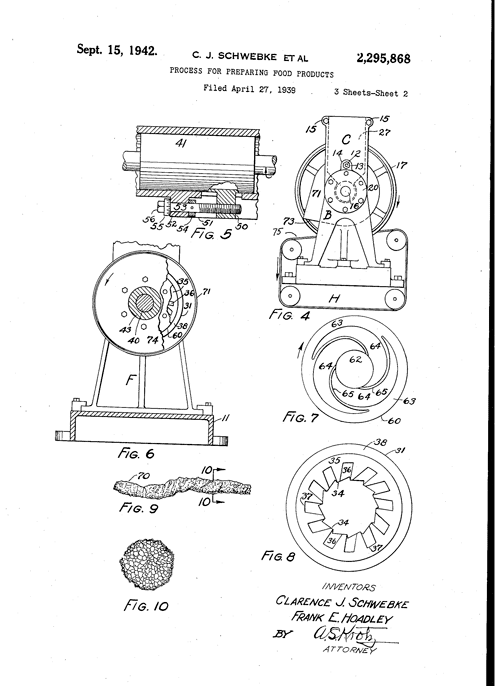
How a cheese curl is made. (patent filing)
Korn Kurls
An early form of cheese curl, first sold in the 1930s by the Flakall Corporation. The company developed this snack in an unusual way. When trying to clean an animal feed grinder, an employee put in moistened corn into the grinder, and what came out was puffed-up corn, which, when covered in cheese, became the cheese curl. So you’re eating an animal feed byproduct whenever you reach for a cheese curl. I just report the news here.
Lion Cereal
A popular brand of cereal in the European market that isn’t sold in the United States, this Nestlé cereal brand, which is based on a popular candy bar, was once taken off the market for years in part because of a reputation for being too unhealthy. During that time, the cereal was reformulated in a way that proved to be a bit healthier. It’s one example of many of cereals produced for markets outside the United States.
McBarge
The nickname for an unusual floating restaurant that was built for Expo ’86 in Vancouver. One of the few fast-food locations of its kind, this boat-located restaurant, built on a ship called the Friendship 500, was developed for millions of dollars before being left out to dry. It was eventually renovated and discussion has been had about turning the boat into a seafood restaurant.
Nacho cheese dispenser
A complex pump design, often used in fast-food settings, to elegantly place thick liquids on top of other foodstuffs. As the name suggests, best known for use with nacho cheese (particularly at locations like Taco Bell), but also widely used for fudge and similar substances in settings like self-serve frozen yogurt shops. These things are incredibly annoying to clean, by the way.
Oleomargarine Act
A law, passed in 1886, that required margarine to be sold and distributed with an unappetizing pink color, rather than the better-known yellow color it tends to use today. This law was on the books for 70 years, and it was implemented at the behest of the dairy industry, which had a fairly aggressive lobbying game at the time.
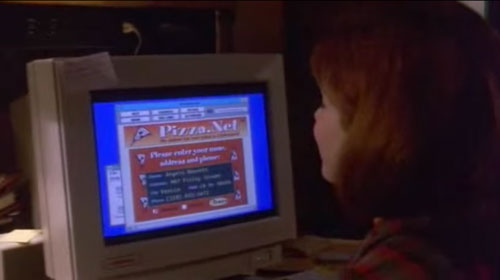
If your startup is inspired by this movie, reconsider your startup.
Pizza.Net
The name of the website from which Sandra Bullock’s character, Angela Bennett, orders pizza online in the movie The Net. The scene was inspired by a real-world effort, Pizza Hut’s PizzaNet (which, fun fact, involved the same company that, in another form, later sued IBM claiming to own the copyright to Unix). However, the most surprising part is that the scene also inspired a real-world effort, CyberSlice.
Quail Egg Scissors
A specific type of scissor, designed for cutting the tops off of quail eggs efficiently, while limiting the amount of shell that might get into the mix during the process. While not exactly the same, the design of this tool is not dissimilar to that of the guillotine styles used by cigar cutters.
Ranch dressing
A creamy variant of salad dressing, using buttermilk as a base, that has become one of the dominant dipping sauces in modern American culture. Developed by onetime Alaskan bush cook Steve Henson, the dressing found high popularity after Henson started to offer it to customers of his California ranch, the Hidden Valley Ranch. From there, it was sold to Clorox in 1972, at which point the company turned it into what is easily the most popular kind of dipping sauce out there that isn’t ketchup or mustard.
Splayd
A combination utensil, similar in function and design to a spork, that adds a sharp edge to the sides of the utensil, making it also useful as a knife. Popular in Australia, the utensil has found limited success globally, despite being objectively more functional than the more-famous spork.
Totino’s
A popular brand of frozen pizza, first sold in the 1960s, that became one of the first to gain national distribution. Sold to Pillsbury in the 1970s, its creator Rose Totino rose up the ranks as a successful executive at Pillsbury, a notable example of breaking through the glass ceiling.
/uploads/0301_uncrustable.jpg)
Uncrustables
A frozen bread-like object, sold by the J.M. Smucker Company, that was notable for removing the crusts from bread, creating a calzone-like enclosure that was ideal for eating peanut butter & jelly sandwiches. The creation of this product led to Smucker being granted a 1999 patent, one that immediately the subject of a lawsuit because, as many pointed out, all they did was create a bread ravioli.
Villa Capri
The Los Angeles restaurant, a favorite of Frank Sinatra, that is (as far as I can tell) the first to sell heart-shaped pizzas to patrons. The heart-shaped pizza, which became much more famous with large delivery chains starting in the 2000s, has been sold in varying forms since at least the 1950s.
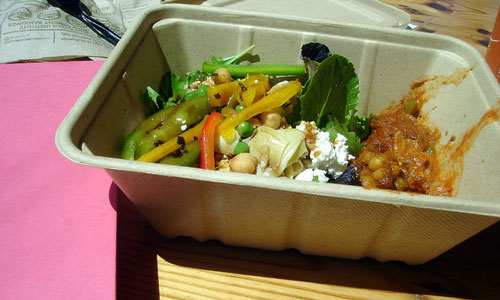
(Photo by Shoshanah/Flickr)
Whole Foods salad bar
A high-profile example of the modern salad bar, particularly one that has had problems over the years with poor scale calibration. (It’s perhaps the thing that, more than anything else, creates the Amazon-owned grocer’s reputation as “Whole Paycheck.”) The salad bar is known for being famously expensive compared to simply buying the foods off the shelf and cooking them yourself, but if you’re willing to do price comparisons, you can game the system and get a relatively cheap meal if you know what you’re buying.
Xifaxan
A brand-name treatment for irritable bowel syndrome, a common digestive disease, that gained a sense of infamy during the 2010s when Valiant Pharmaceuticals gave the drug a mascot—“gut guy,” an intestine-shaped dude that literally runs around trying to find the nearest bathroom. This was a very famous drug, by the way that made its maker hundreds of millions of dollars and was promoted during the Super Bowl. (Side note: I wish more “X” foods existed. Disappointed that I’ve never written about xanthan gum.)
Yo! Noid
A 1990 video game, produced by Capcom for the Nintendo Entertainment System, that was based around the then-trending pop-culture icon, which was Domino’s Pizza’s brand mascot before a strange kidnapping incident took the steam out of the Noid’s marketing punch. This game, like many Capcom games of the era, is better than it has any right to be, in part because it was based on Kamen no Ninja Hanamaru, a Japanese game that was Americanized with a brand mascot.
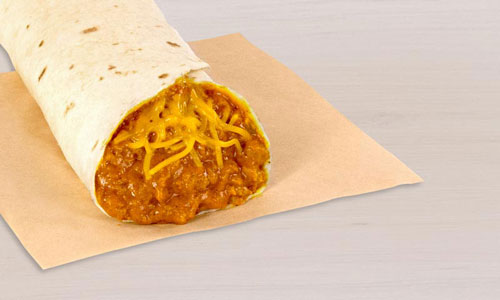
(Via the Taco Bell website)
Zantigo
A Mexican fast-food restaurant chain, famous in the ’70s and ’80s, that is best-known for fostering the chili cheese burrito, a cult menu item that Taco Bell has sold in some parts of the country for years, despite the product not technically being a menu item for decades. (Taco Bell bought Zantigo in the late ’80s and acquired the recipe along with the locations.)
Like Weird Al, we can’t stop coming back to food as a subject.
And I think a big reason for that is that food is inherently tedious. Literally the most tedious thing most people do on an average day is eating. Yet we continue to do it. And combine that with the fact that food is often embellished in ways that can seem absurd to the outsider. After all, Hot Pockets didn’t come from thin air.
There will always be a new meal at the end of the day, and sometimes that meal might not look like anything more exciting than a product in a box with fancy packaging that you put in a microwave for three minutes and hope for the best.
Sometimes our food simply does not live up to our high standards of creativity. Or sometimes it tries too hard, and raises bigger questions that can be hard to fathom.
First question on my mind: Why are nacho cheese pumps so complicated?
--
Find this one an interesting read? Share it with a pal!
And thanks again to Refind for sponsoring today’s issue.
:format(jpeg)/uploads/tedium032523.gif)
/uploads/tedium032523.gif)


/uploads/ernie_crop.jpg)